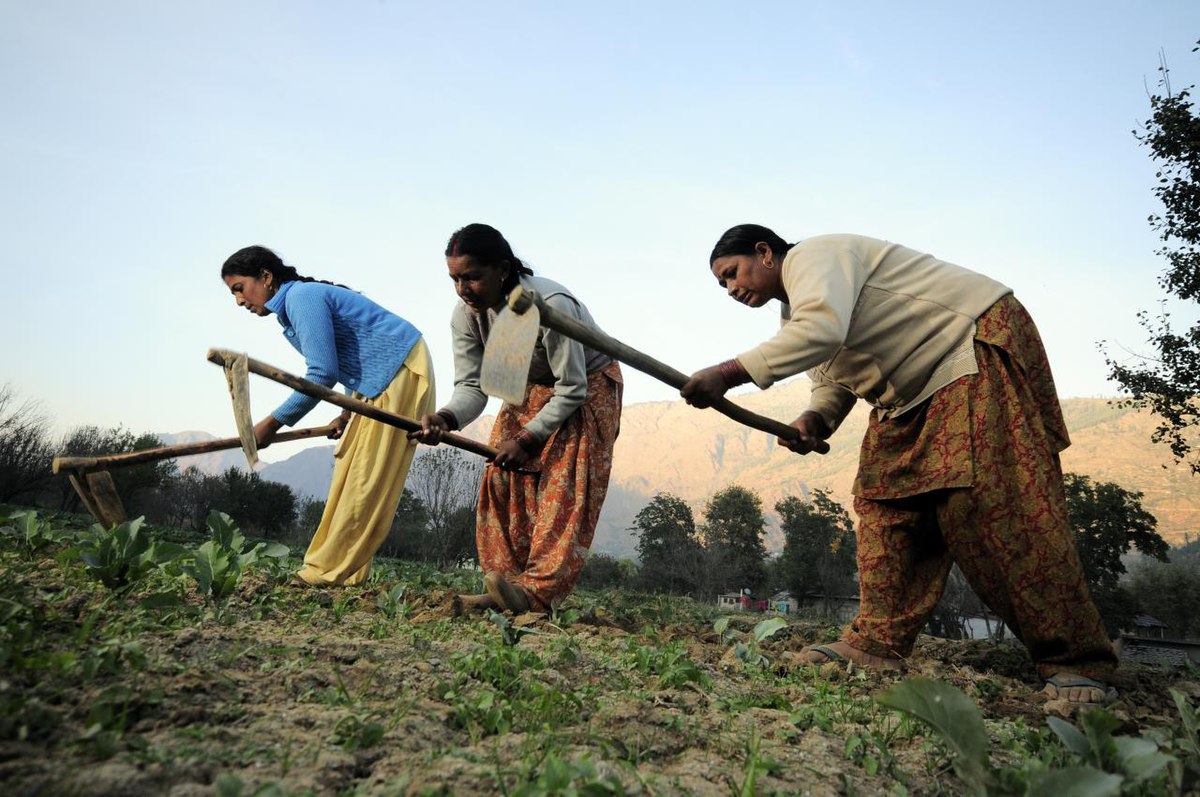By Anjali Shukla
On the occasion of International Women’s Day, it is imperative to acknowledge and appreciate the contribution of women farmers in Indian agriculture. Agriculture is the backbone of our country’s economy and women have been playing a crucial role in this sector for ages. However, women farmers face numerous challenges, both in the field and in the market. This article aims to shed light on the struggles of women farmers and explore solutions to empower them for a sustainable future.
Despite their immense contribution, women farmers face significant challenges. Firstly, they are deprived of land ownership and control, which limits their access to credit, inputs, and markets. According to the Agriculture Census 2015-16, only 13.87% of landholders in India are women. Additionally, women are often relegated to unpaid and menial labour and are paid significantly less than their male counterparts. Women farmers are also more vulnerable to climate change, as they lack access to information, technology, and resources to cope with its impact.
Women farmers face discrimination and exploitation in the market as well. They are often not paid fair prices for their produce and have limited access to markets due to their lack of bargaining power. The lack of infrastructure such as cold storage, transportation, and market linkages further exacerbates their woes. In a survey conducted by Oxfam India, it was found that women farmers earn 61% less than male farmers for the same work.

Despite the challenges, women farmers play a significant role in agriculture economy. Women account for 75% of the agricultural workforce in India and contribute 50% of the total farm output. According to the Food and Agriculture Organization (FAO), if women had the same access to resources as men, they could increase the farm output by 20-30%. Women’s contribution to agriculture is not limited to the field, but they are also involved in post-harvest management, processing, and marketing of agricultural produce.
To empower women farmers, there is a need to address the systemic discrimination and biases they face. Women should be given equal access to land, credit, and inputs, and their right to decision-making in agriculture should be recognized. The government should provide technical and financial support to women farmers for building their capacity, accessing technology, and enhancing their market linkages. Women-centric initiatives such as the Mahila Kisan Sashaktikaran Pariyojana, launched by the Ministry of Agriculture and Farmers’ Welfare, should be scaled up to reach more women farmers.
New technological advancements can provide a window of opportunity for women farmers to overcome the challenges they face. Digital tools such as mobile apps, drones, and remote sensing can improve the access of women farmers to real-time information on weather, pests, and crop prices. Precision farming techniques such as drip irrigation and crop rotation can increase crop yield and reduce input costs. Women farmers can also explore the potential of agri-business, food processing, and value addition for enhancing their income.
The struggles faced by women farmers are not just statistics but real-life stories of hardship and resilience. One such story is of Janki Bai, a woman farmer from Madhya Pradesh, who had to struggle for years to get her name registered in the land records. Janki Bai, with the help of a local NGO, fought a legal battle and finally got her name registered in the land records, which helped her access credit and other government schemes. Another story is of Chinnapillai, a Dalit woman farmer from Tamil Nadu, who faced caste discrimination and was denied access to water for irrigation. Chinnapillai, with the help of a local organization, installed a rainwater harvesting system, which not only provided her with water for irrigation but also helped recharge the groundwater. These stories highlight the struggles of women farmers and the importance of providing them with equal opportunities and resources.
Women farmers can take several steps to enhance their productivity and income. Firstly, they can form self-help groups and cooperatives to access credit, markets, and technology. Secondly, they can adopt sustainable farming practices such as organic farming and agroforestry to reduce input costs and enhance soil fertility. Thirdly, they can explore the potential of value addition and food processing to increase their income. Finally, women farmers should prioritize their own health and well-being and seek support for their physical and mental health.
Women farmers play a crucial role in Indian agriculture and deserve recognition, support, and empowerment. The government, civil society, and private sector need to work together to address the systemic discrimination and biases faced by women farmers and provide them with equal access to resources and opportunities. Technological advancements, coupled with sustainable farming practices, can enhance the productivity and income of women farmers. On this International Women’s Day, let us pledge to empower and uplift the women farmers of India for a sustainable and inclusive future.



